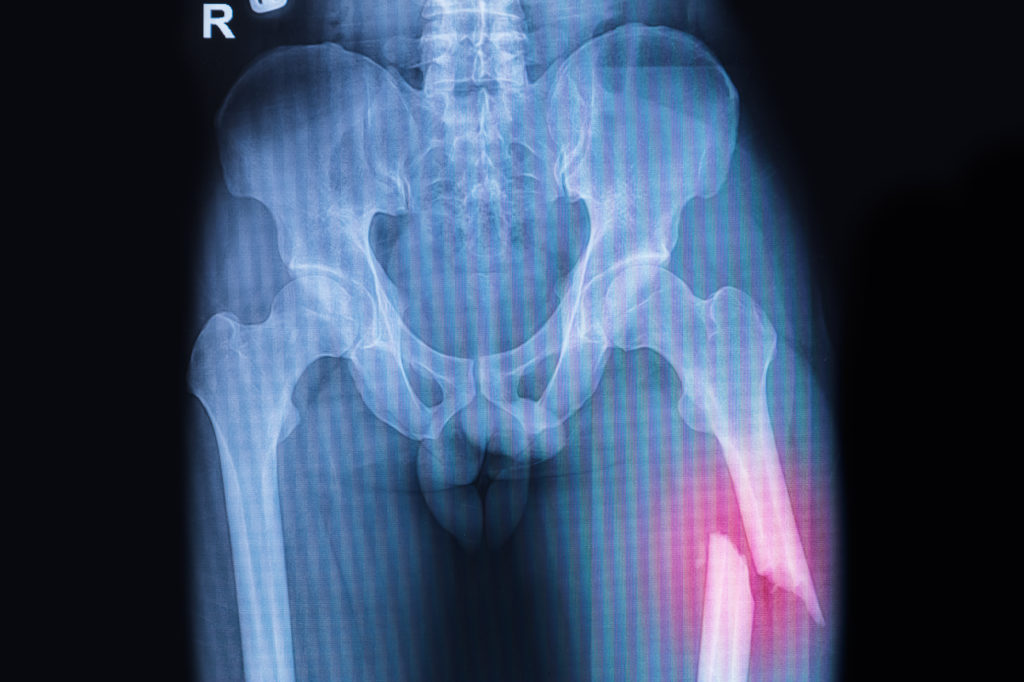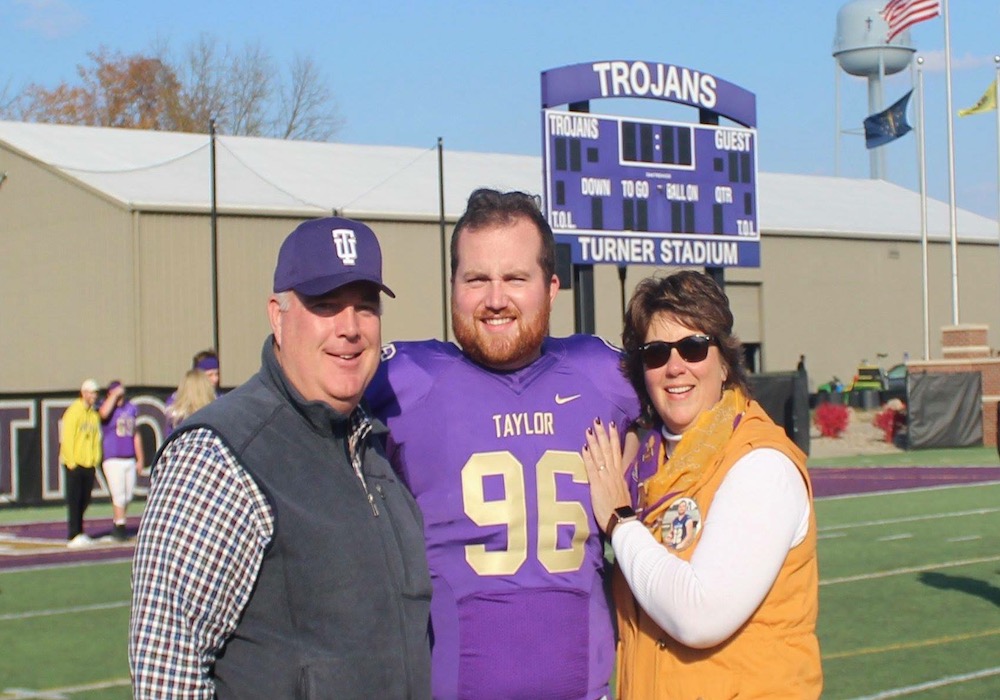The thighbone (or femur) is the longest bone in your body and takes a lot of force for it to break.
The long, straight part of the thighbone (femur) is called the femoral shaft. When there is a break anywhere along this length of bone, it’s called a femoral shaft fracture. This type of broken leg almost always requires surgery to heal.
Cause
- High impact collisions like a car crash
- Falls from significant heights
- Older individuals with weaker bones who fall while standing
Symptoms of a femur shaft fracture
- Severe pain immediately
- Unable to put weight on your leg
- Your leg may look misshapen
Types of femoral shaft fractures
Thighbone fractures are described by the location along the femur, the pattern of the break and whether the skin and muscle has been torn by the injury.
- Comminuted fracture: The bone is broken in more than two places.
- Oblique fracture: Angled line across the femur.
- Open fracture: The broken bone is sticking out through the skin; this is a surgical emergency.
- Spiral fracture: The fracture line twists around the femur.
- Transverse fracture: The break is horizontal across the femur.
Physician examination
A broken thighbone is a medical emergency. Call 911 or go to your nearest emergency room. OrthoIndy Trauma physicians are located at St.Vincent Indianapolis Level I Trauma Center.
To determine whether you have a broken thighbone, your physician will ask you for a complete medical history, ask questions about your pain and how long you have been experiencing your symptoms and conduct a physical examination. An X-ray, CT Scan or MRI may be necessary to rule out other injuries.
Treatment for a broken thighbone
Typically treatment for a broken thighbone is surgical and is performed as soon as the patient is stable enough to undergo surgery.
How long does it take to walk after a broken femur?
Most broken thighbones take four to six months to completely heal after surgery. Many times physical therapy is started immediately after surgery with simple exercises to start putting weight on the leg. Eventually range of motion and strengthening exercises will be added.
Learn more about trauma care provided by OrthoIndy Trauma specialists.
Schedule an appointment
Your well-being is important to us. Click the button below or call us to schedule an appointment with one of our orthopedic specialists. If your injury or condition is recent, you can walk right into one of our OrthoIndy Urgent Care locations for immediate care. For rehabilitation and physical therapy, no referral is needed to see one of our physical therapists.




